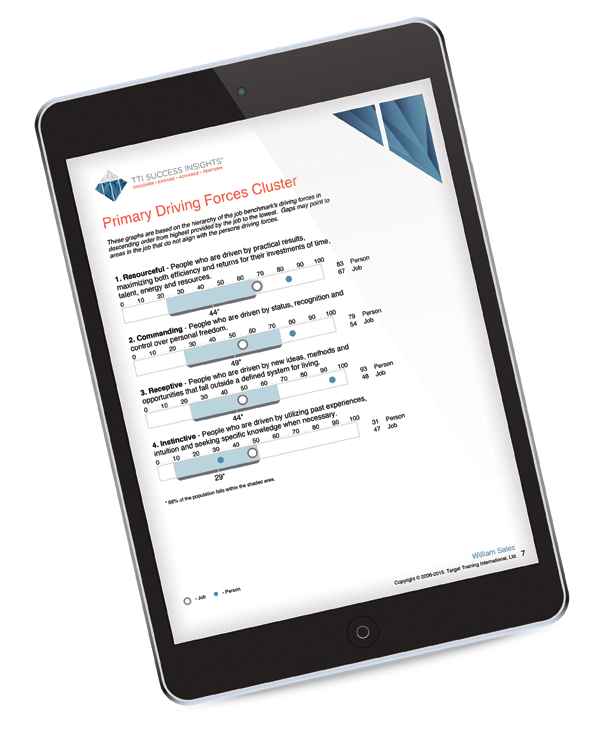Avoiding written communication nightmares- a how to for Leaders.
My son’s School report came in the post the other day. I opened it, feeling very apprehensive. He’s only 9 years old so I quickly realised that it had nothing to do with him. I was remembering my own quivering fingers opening school reports or searching frantically online for results. Those experiences are hard to forget!
Do you remember getting back assignments? The red remarks on school and college papers. It still makes me uncomfortable when I think of it today…and unfortunately these negative experiences can stay with us even as Leaders in our professions and mean we lack confidence when it comes to written communication.
The truth is we all put pen to paper or fingers to keypad everyday and make our mark on the world, for better or for worse. Each email we send and social media update we design must be written as clearly and persuasively as possible if we want to be successful as leaders. Every phrase or sentence carries significant weight, partially because of how widely and quickly it can spread. A poorly written communication can cause confusion, offence that may take a lot of time to clear up or worse again damage our credibility.
Are you a leader who agonises over every word when it comes to your written communications? If so, then we’re about to give you back precious hours of your life. Thankfully effective writing is a skill you can develop not just something you’re born with.
We’re going to unpack the key techniques for good written communication. In The Complete Leader Programme we take a deeper dive but in this blog we’re using K.I.S.S. (keep it simple..)

Why is effective written communication crucial to a leader?
In The Complete Leader Programme, we include Written Communication Skills under ‘Leaders Lead Others’. In our experience it’s a vital skill for Leaders.
A HBR Article on Communication, by Scott Edinger says that in 20 years of work in organisation development, he’s never heard anyone say that a leader communicated too much or too well. On the contrary, the most common improvement suggestion he’s seen from thousands of 360 evaluations he’s reviewed is that it would be better if the subject in question learned to communicate more effectively.
There are so many ways that a Leader has to use his written communication skills, from Business Proposals, Corporate Memos, weekly Meeting Notes complete with follow up actions to simple Emails.
A leader held in high regard has excellent communication skills and top of those skills is written communication as it’s so important in this digital age.
Your written communications skills can make the difference between between catalyzing your team into action or leaving them idle and confused. As Dale Dixon of The Complete Leader Faculty says, it takes a lot longer to draft your written communication but its impact remains well after your spoken word has been forgotten.
Unfortunately for leaders all writing goes to a reader who interprets it through their filters of understanding and bias. Many readers including our colleagues and customers will have an immediate negative reaction if they see a typo or a grammatical error. How many times have you read an email or an article online and thought how badly it was written and doubted the organisation’s credibility? Yes we’re all guilty of this instant judgement. The greatest mistake in communications is to assume it has happened
The Definition of effective Written Communication Skills..
A leader who has mastered the skills associated with Written communication delivers her message in a clear and compelling manner. She has the ability to clarify information, issues and abstract concepts for her audience.
Leaders adept at written communication are succinct and present arguments and viewpoints in an objective way. Their communications are logical and lead to natural conclusions. A key skill within this skill set that high performing leaders possess is the ability to identify which information needs to be communicated and not to overwhelm the receiver. Too often we want to share it all or can’t distill the message down to it’s essence.
Finally, a leader efficient in written communications will compose her message intentionally with her audience’s specific needs in mind.
“You can have all the great ideas in the world and if you can’t communicate, nobody will hear them” Kara Blackburn, MIT School of Management.

The K.I.S.S. Guide to effective written Communication Skills
Begin with the fundamentals
#1: Ask the question: Would this situation be better dealt with person-to person?
Some situations require a face to face, the issue may be complex, emotional or very urgent in which case a written communication is not the answer.
#2: Have a positive mindset
Don’t say you can’t write, anyone can learn to write with guidance and practice, we’ve experienced this on The Complete Leader Programme.
#3: Follow the rules of of Grammar and Punctuation
Avoid slang and jargon. Show your audience you have respect for the written word. We recommend reading a book like Fowler’s Dictionary of Modern English Usage.
#4: Start Reading
One of the best ways to improve your Communication skills is to read often. Read with the intention of learning more about the art and skill of writing.
#5: Focus on building your vocabulary
Did you know that one of the big predictors of future earnings and influence is the breadth of a person’s vocabulary according to the Johnson O’Connor research foundation? Try an app such as Word of the Day and then intentionally use that new word throughout your daily interactions.
The Writing
#1: Identify your medium
Is it a formal report or an internal email? This will decide the tone of your communication as well as some of the content, according to Mind Tools.
#2: Ask yourself the question: What message am I trying to convey?
What do my audience need to know or do? Most people get tied up in the wording and forget about the message.
#3: Have a plan
If you’re writing a longer document, it’s important to have a proces. Start with a brainstorm, then make notes, write down the key information you want to get across, outline a beginning, middle and end. Find a way that works best for you and do this consistently.
#4: Who is your audience?
And who else should I expect will read this? Write with your audience in mind. TTI’s DISC identifies people’s behavioural styles and enables you to communicate more intentionally for different styles. Does your approach need to be analytical and detailed, friendly and persuasive or brief and to the point, for example?
#5: Write in plain English
Use everyday words. This is the workplace. Keep your sentences, short, sweet and jargon free. It allow your audience concentrate on your message as opposed to having to deconstruct your complicated sentences.
#6: Be Direct
Get straight to the point. Don’t hide your message way down in your communication. Harvard Business Review have an excellent article on how to write an email with military precision. It is a good example of getting your message clearly up there in front of you audience.
#7: Friendly Format
Structure your piece with Headings, sub-headings, numbers and bullet points to break up the text. Don’t overwhelm your reader with dense documents.
#8: If you’re a good speaker
Record what you want to say first. Then transcribe it and edit your document until you’re happy with it. Shawn Kent Hayashi Communication Expert and Complete Leader Faculty member says many people are verbal processors, they only get clear about what they’re they’re thinking and feeling once they’ve said it. This is an effective way for them to write well.
#9: Don’t expect Perfection:
Allow yourself to create an imperfect first draft. Ron Price recommends writing this quickly and in your own words (after your plan) Once that’s done, this can be re-read, improved and edited.
#10: Write in a way that is personable and authentic
According to John Trimble who wrote “Writing with Style” readers should buy two things, firstly the author’s main idea and secondly the author herself. You want your reader to believe you are smart and informed, you earn their trust by being authentic.
The Rewriting
#1: After your first draft is finished, you’re nearly there
But this piece is crucial. Invest the time in proof-reading it carefully yourself. There’s no excuse for typos, missing words etc. Use your spell check and word counter apps. Some people recommend proofreading from the end of the article back to the beginning as the mind fills in missing words when we read normally.
#2: Edit vigorously
Read through slowly and remove anything unnecessary. Clarify and simplify as much as possible.
#3: Another set of eyeballs
Depending on the communication piece you’re writing, it may be worthwhile asking someone else to proofread and edit it aswell.
#4: Read it aloud.
You’ll notice the rhythm of your words and if it sounds right.
#5: Remember your impact
Make sure you always send high quality communication. Don’t forget to double check the names of the people you’re sending to. Add graphics if they suit your purpose. The likelihood is that more people will read your communications if they are written to a high standard.
The Practice
#1: Write consistently
Set time aside to write every day, outside of your work demands. Start a diary or a daily journal, it really helps to clarify your thoughts when you get them on paper.
#2: Join a writers group
Take an online class or research some established writers and their tips. Take a practical Leadership Development Course like The Complete Leader Ireland.
#3: Give all writing importance
Write as if everything you write, from an email to a full length book, will eventually end up in the public domain according to The Complete Leader book.
‘Writing is easy, all you have to do is cross out the wrong words.’ Mark Twain

Final Thoughts
Strong Written Communication Skills are essential to a Leader’s success and influence. Written communication has great power to produce positive results or cause great harm. No matter how badly you think you score today, It’s never too late to begin developing this competency.
Start by believing you can do it, make sure you have covered the basics, read more, write more, build your vocabulary, check your grammar and spelling- and check it again.
Identify your medium, your message and your ideas, write simply and be direct. Declutter your document. Record and transcribe your ideas if you’re a verbal processor. Remember don’t strive for perfection, be authentic and personable.
Proof-read, edit, read it aloud- essentially cut the fat. Practice makes permanent, as we always say. Use every opportunity to practice your writing, be consistent, join a group and always write with the intention of having a large audience.
What one thing can you do today to begin your journey to being a more effective written communicator?
If you would like to join a leadership community to help you on your journey- we are the founders of the Complete Leadership Ireland LinkedIn group, which is full of great resources and discussion to help you become a more effective leader. We would love to have you with us.
10 Things Successful People Do Every Day
What if there was a secret formula for success that you could copy? Kevin Kruse best selling author recently interviewed more than 200 highly successful people to find out what their number 1 secret to productivity? These people included 7 billionaires and 13 olympians. The answers have been distilled into 10 Simple Steps you can follow to achieve your own success.
5 mistakes people make with the DISC profile
When you are hiring, you need to use more than DISC. DISC is outwardly observable behavioural tendencies. What goes on beneath the surface is harder to read but even more powerful. What if you could see what a person values and is driven by, be it money, status, helping others? How much engagement could you get from your employees if you had this information at your finger tips. Using DISC correctly and in conjunction with the other TTI Tools is essential for your organisation’s success.
3 Easy Steps to Building a Solid Company Culture
Companies need to reimagine how they attract – and retain – employees by giving them what they desire, resulting in keeping them happier and more engaged. I am unique. So is every other employee. Companies would be wise to get to know their employees on a personal level and find out what is truly important to each and every one of them. Then, create a unique plan for each person that helps the employee achieve what he or she strives to achieve.

FREE DISC Assessment: Find out what your behaviours really are!
Have you ever taken a DISC Assessment? Actually… Have you ever taken a TTI DISC Assessment? Well why wait any longer, lets find out why you really behave the way you do!



